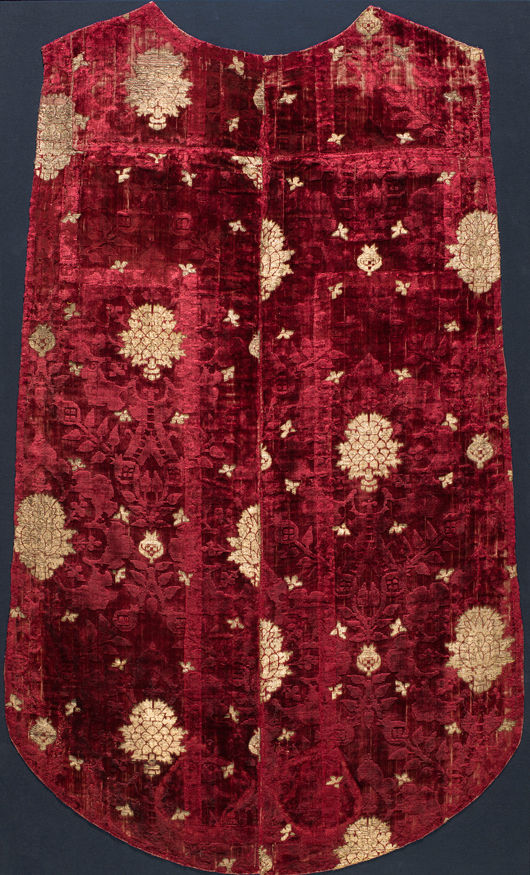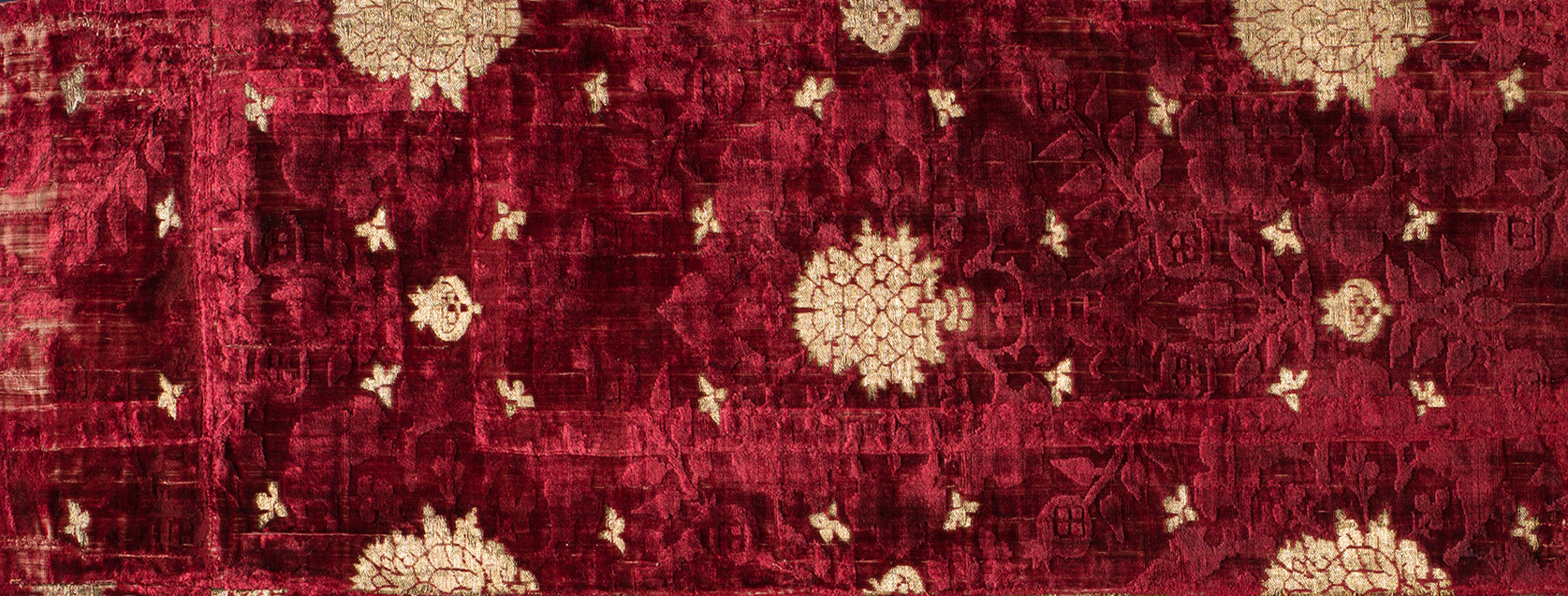STARTS
2018-06-20 00:00:00
Ends
2019-01-06 23:59:00
Location
Renaissance Italian and Spanish Textiles
Red! Renaissance Italian and Spanish Textiles
During the Renaissance, monochromatic velvets became popular, especially those of a deep red color.
This exhibition showcases five velvet textiles in radiant reds, ranging from a religious garment to fragments that show a variety of cut-pile designs including abstracted vegetation and small-scale patterns.
While there are many sources of red dye, the most highly prized and costly was cochineal red, which was derived from insects native to the Americas and imported to Europe through Spain. Weavers varied the single tone of red by employing different weave structures and textures, such as contrasting cut-pile velvet (cut loops of surface yarn) designs with outlines of looped pile, a technique known as ciselé velvet.
The luxuriously decorated back panel of a chasuble, a sleeveless vestment worn over the white linen robe of a priest during services, displays one of the most opulent of the textile patterns: a background of red, cut-pile velvet of interlacing vegetation and abstract floral elements further embellished with brocaded pomegranates and floral motifs in metallic threads. These 15th-16th-century textiles were created during a period of expanded exploration and trade, when Spain and Italy—particularly the city of Venice—emerged as major centers of textile production.

